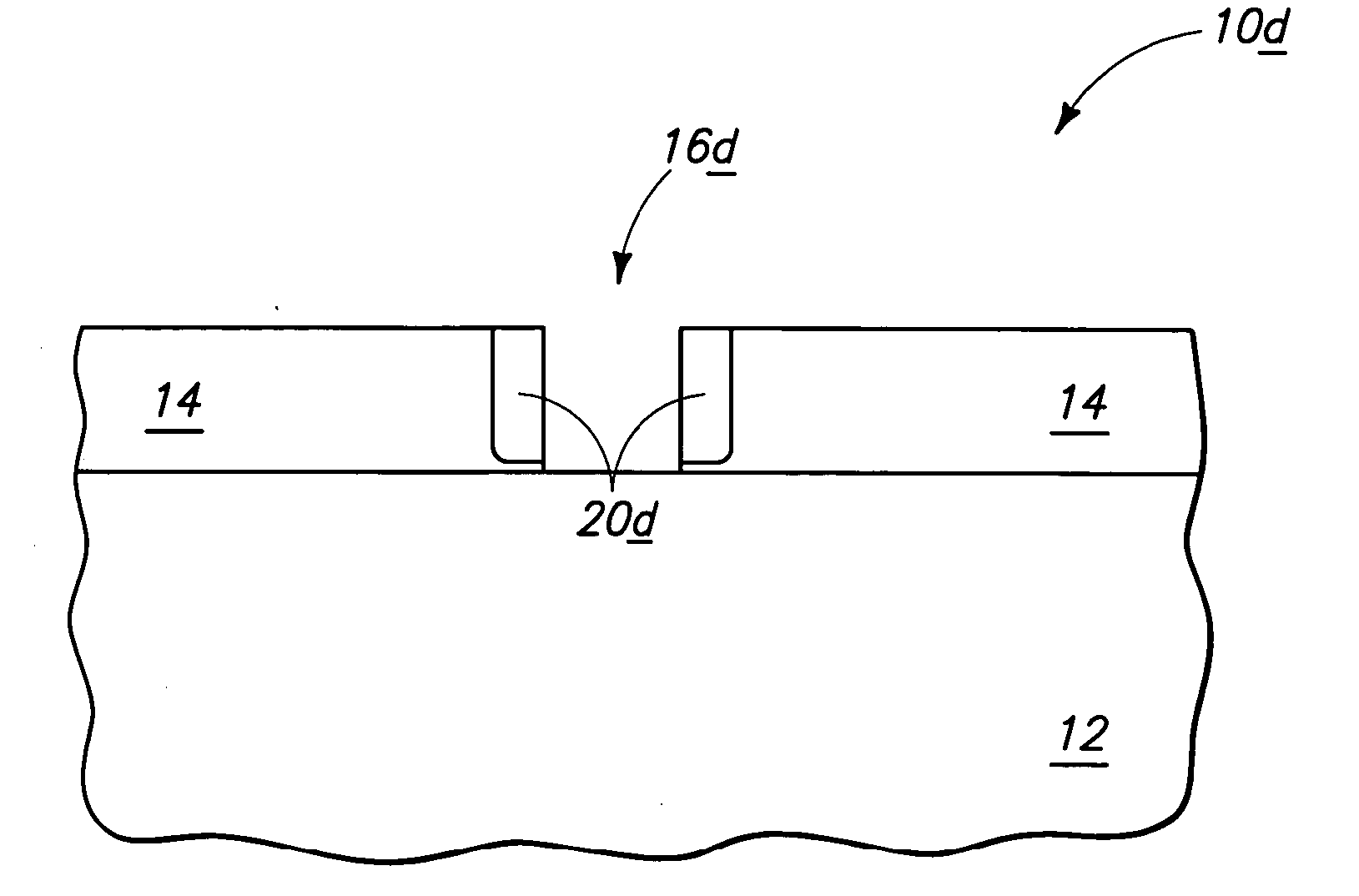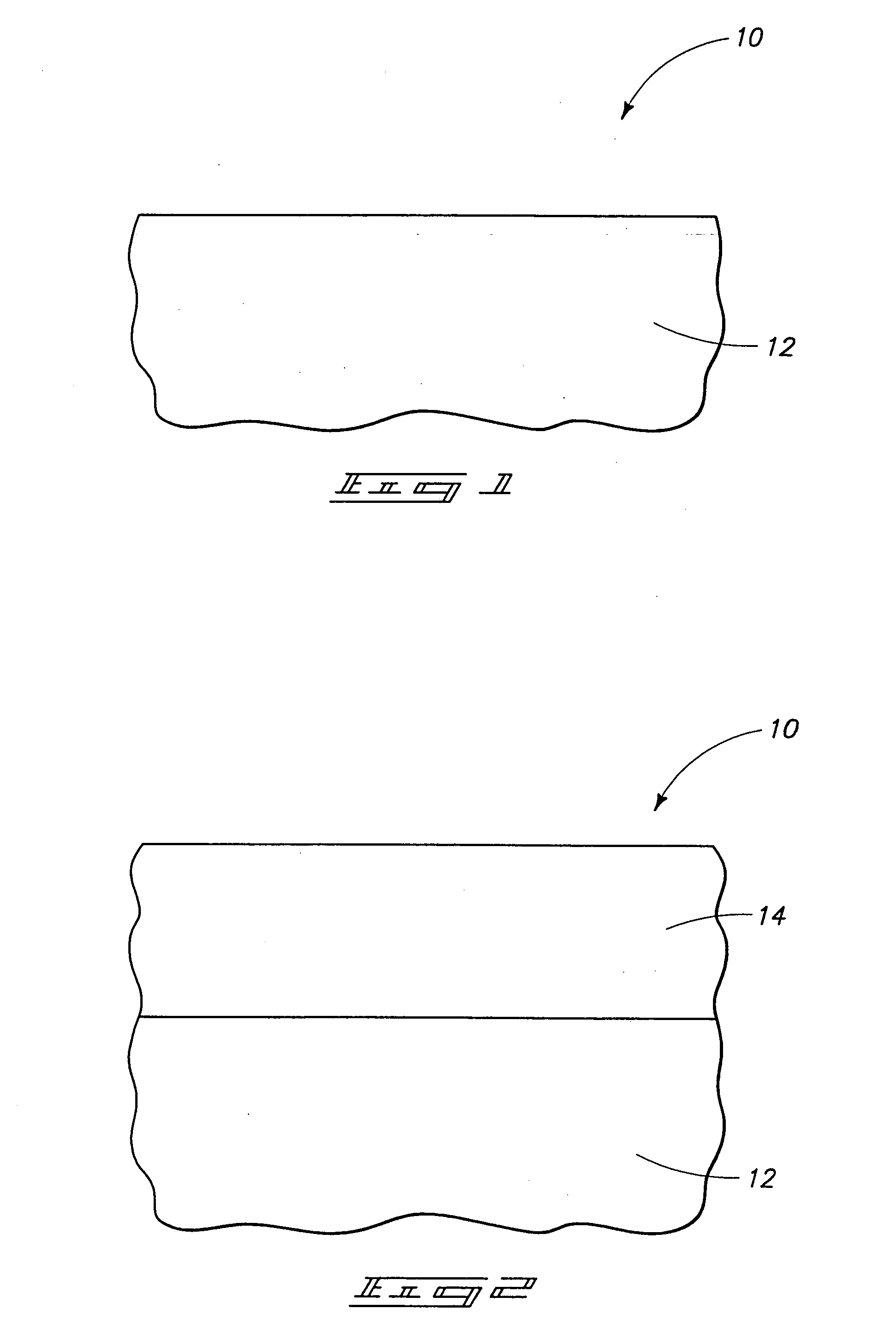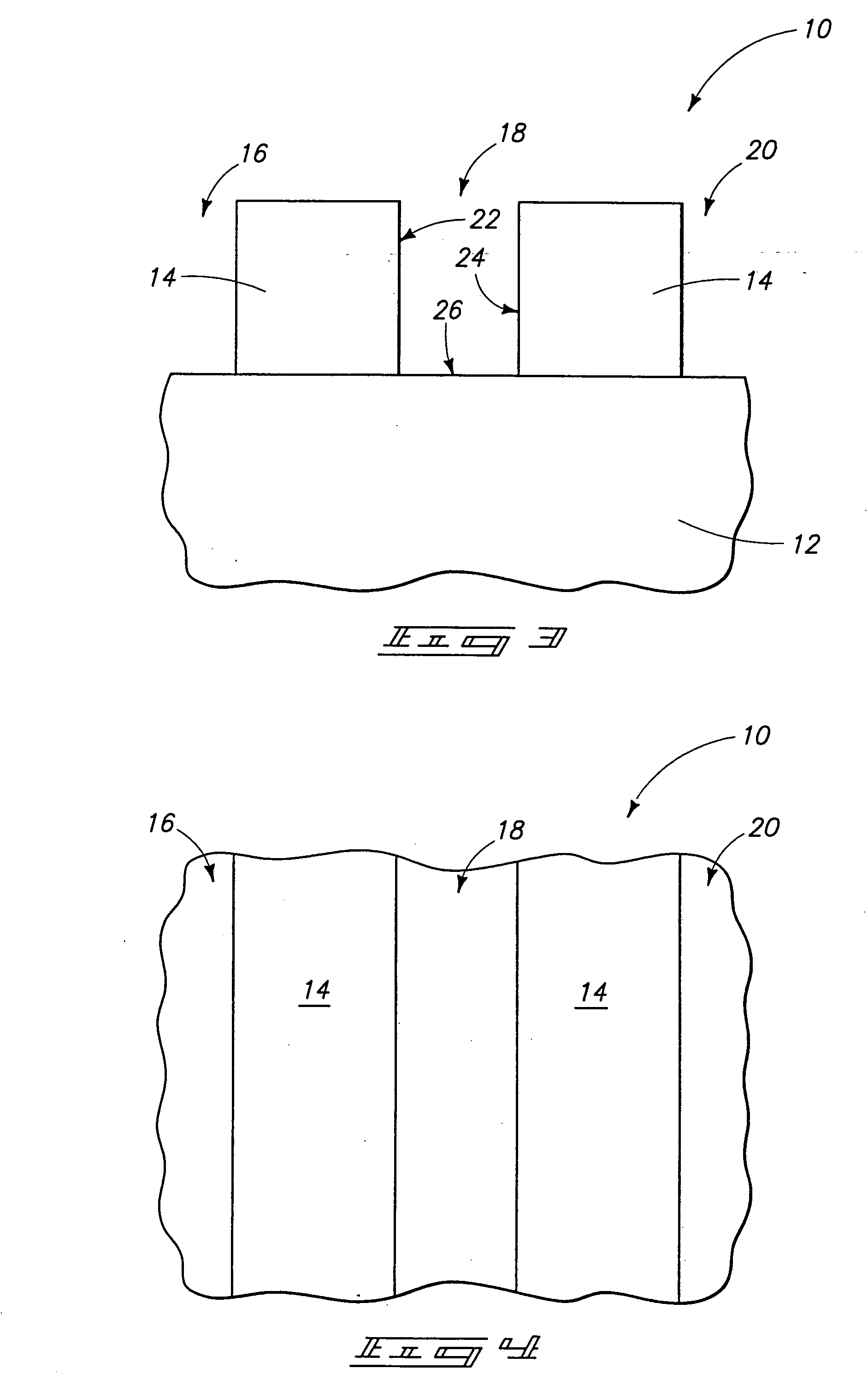Methods of forming layers comprising epitaxial silicon
a technology of epitaxial silicon and forming layers, which is applied in the direction of basic electric elements, electrical apparatus, and semiconductor devices, etc., can solve the problems of reducing the breakdown voltage, and not uniform crystal structure of the epitaxial layer
- Summary
- Abstract
- Description
- Claims
- Application Information
AI Technical Summary
Problems solved by technology
Method used
Image
Examples
exemplary first embodiment
[0040] Exemplary first embodiment methods of forming layers comprising epitaxial silicon are initially described with reference to FIGS. 1-11. Referring to FIG. 1, a substrate, preferably a semiconductor substrate, is indicated generally with reference numeral 10. In the context of this document, the term “semiconductor substrate” or “semiconductive substrate” is defined to mean any construction comprising semiconductive material, including, but not limited to, bulk semiconductive materials such as a semiconductive wafer (either alone or in assemblies comprising other materials thereon), and semiconductive material layers (either alone or in assemblies comprising other materials). The term “substrate” refers to any supporting structure, including, but not limited to, the semiconductive substrates described above. Substrate 10 comprises a monocrystalline material 12, for example and by way of example only, lightly doped monocrystalline silicon or a monocrystalline silicon germanium a...
PUM
 Login to View More
Login to View More Abstract
Description
Claims
Application Information
 Login to View More
Login to View More - R&D
- Intellectual Property
- Life Sciences
- Materials
- Tech Scout
- Unparalleled Data Quality
- Higher Quality Content
- 60% Fewer Hallucinations
Browse by: Latest US Patents, China's latest patents, Technical Efficacy Thesaurus, Application Domain, Technology Topic, Popular Technical Reports.
© 2025 PatSnap. All rights reserved.Legal|Privacy policy|Modern Slavery Act Transparency Statement|Sitemap|About US| Contact US: help@patsnap.com



